Come join us now, and enjoy playing your beloved music and browse through great scores of every level and styles!
Can’t find the songbook you’re looking for? Please, email us at: sheetmusiclibrarypdf@gmail.com We’d like to help you!
Table of Contents
William Grant Still: Three Visions (Suite for piano solo)
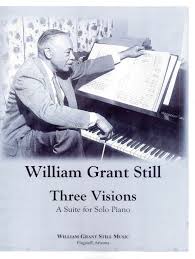
Best Sheet Music download from our Library.
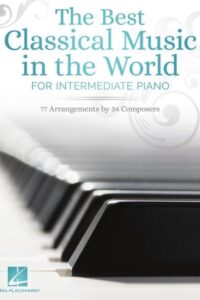
Please, subscribe to our Library.
If you are already a subscriber, please, check our NEW SCORES’ page every month for new sheet music. THANK YOU!
0:00 – Dark Horseman 1:30 – Summerland 6:00 – Radiant pinnacle
Browse in the Library:
Or browse in the categories menus & download the Library Catalog PDF:
William Grant Still
William Grant Still (1895 – 1978) was an American composer, arranger, conductor, and multi-instrumentalist, often called “the Dean of African American composers.” He was the first African American to have a symphony performed by a major orchestra in the United States, the first to conduct a major symphony orchestra, and the first to have an opera produced by a major opera company.

Early Life and Education
- Born on May 11, 1895, in Woodville, Mississippi, and raised in Little Rock, Arkansas.
- His father died when he was an infant, and his mother, a teacher, encouraged his musical interests.
- Studied at Wilberforce University, where he initially pursued medicine but shifted to music.
- Later trained at the Oberlin Conservatory of Music, then studied composition with George Whitefield Chadwick and later with avant-garde composer Edgard Varèse in New York.
Career and Achievements
- Worked as an arranger for popular and jazz bands in New York, including for W. C. Handy and Paul Whiteman.
- Became involved with the Harlem Renaissance, blending African American musical traditions with classical forms.
- His Symphony No. 1 “Afro-American” (1930) was the first symphony by an African American to be performed by a major U.S. orchestra (Rochester Philharmonic, 1931).
- Conducted the Los Angeles Philharmonic at the Hollywood Bowl in 1936, making him the first African American to lead a major orchestra in the U.S.
- His opera Troubled Island (1939, libretto by Langston Hughes and Verna Arvey) was the first by an African American staged by a major company (New York City Opera, 1949).
Musical Style
- Fused classical European traditions with African American idioms: blues, spirituals, jazz, and folk tunes.
- Emphasized lyricism, accessibility, and cultural expression rather than strict modernist abstraction.
- Advocated for a distinctly American classical music rooted in Black cultural traditions.
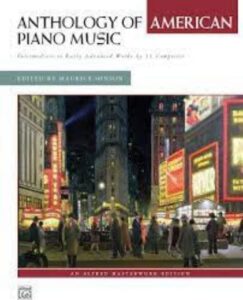
Notable Works
- Symphonies: Afro-American Symphony (No. 1), Song of a New Race (No. 2), The Sunday Symphony (No. 3), Autochthonous Symphony (No. 4), Western Hemisphere Symphony (No. 5).
- Operas: Troubled Island, A Bayou Legend, Highway 1, U.S.A.
- Chamber & Vocal Music: Lyric Quartette, Danzas de Panama, many art songs.
- Also wrote for radio, film, and popular ensembles.
Legacy
- Broke multiple racial barriers in American classical music.
- Opened doors for later generations of African American composers and performers.
- His works are increasingly studied and performed, recognized as cornerstones of 20th-century American music.
- Died in Los Angeles, California, on December 3, 1978.
William Grant Still’s music stands out for celebrating African American heritage within the classical tradition, offering a unique and dignified voice at a time when systemic racism excluded many Black composers from mainstream recognition.
Three Visions (1935) is one of William Grant Still’s most powerful works for solo piano. It is a short suite in three movements, deeply symbolic, written during the Harlem Renaissance period when Still was developing a distinctive African American voice within classical idioms. The suite is often regarded as a spiritual and philosophical statement on the human soul’s journey after death.
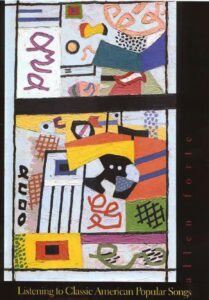
Three Visions (1935) Overview and Musical Analysis
- Title: Three Visions (for solo piano)
- Date: 1935
- Movements:
- Dark Horsemen
- Summerland
- Radiant Pinnacle
- Theme: The cycle represents the progression of the human soul: confrontation with death, passage to spiritual peace, and ultimate ascension.
1. Dark Horsemen
- Character: Turbulent, dissonant, and rhythmically urgent.
- Musical features:
- Rapid ostinati and syncopations drive the texture.
- Dense chords, sharp dynamics, and angular melodies suggest violence and inevitability — the soul’s confrontation with mortality.
- Harmonic language: rooted in tonal centers but heavily chromatic, with influences from early modernism (Still studied with Varèse).
- Strong percussive writing evokes imagery of galloping horses (possibly a reference to the biblical Four Horsemen of the Apocalypse).
Interpretation: This movement symbolizes the struggle and chaos of death, the breaking away of the soul from earthly ties.
2. Summerland
- Character: Gentle, lyrical, and serene — the most frequently performed movement.
- Musical features:
- Lush, hymn-like melody in the middle register, often played with a singing legato.
- Rich Romantic harmonies, influenced by Chopin and Debussy but colored with blues-inflected lines.
- Transparent texture, long sustained chords, and rubato create a meditative atmosphere.
- Tonal stability (often interpreted in D♭ major) provides calmness.
Interpretation: Summerland represents the spiritual paradise the soul reaches after death — peaceful rest and eternal beauty.
This movement is sometimes performed alone as an independent concert piece or even arranged for orchestra.
3. Radiant Pinnacle
- Character: Triumphant, luminous, and ascending.
- Musical features:
- Energetic rhythms, sweeping arpeggios, and brighter harmonies than in the previous movements.
- Builds momentum with a sense of striving upward, often through sequences and rising melodic gestures.
- Tonal clarity, major sonorities, and climactic chords express transcendence.
- Harmonically more consonant than Dark Horsemen, but with modern chromatic coloring.
Interpretation: This final movement depicts the soul’s union with the divine, ascending to its highest state — ultimate illumination.
Stylistic Significance
- Still fuses African American spiritual aesthetics (hymn-like phrasing, blues shadings, and rhythmic vitality) with Romantic piano traditions and 20th-century modernism.
- The three movements form a narrative arc: struggle → peace → transcendence.
- Philosophically, the suite echoes African American religious culture, yet framed in a universal human story of death and renewal.
In short, Three Visions is both a musical poem and a spiritual statement. It demonstrates Still’s ability to merge classical craft with African American cultural expression, creating a deeply humanistic and uplifting work.
Perfect — let’s dive into a harmonic walkthrough of “Summerland” from William Grant Still’s Three Visions. Since this movement is often performed alone and is the most tonal of the suite, it lends itself beautifully to harmonic analysis.
(Note: Exact bar numbers vary depending on the edition, but I’ll give the progression in sections. The piece is most often read in D♭ major.)
“Summerland” — Harmonic Analysis
Opening (mm. 1–4)
- Key: D♭ major
- Chords:
- I (D♭ major) — tonic established gently, hymn-like.
- IV (G♭ major) with added 6th/9th sonorities.
- I again, enriched by suspensions and inner voice motion.
The effect is calm, hymn-like stability. Still avoids strong cadences, instead sustaining a floating atmosphere.
First Phrase (mm. 5–12)
- Melody enters in the middle register, supported by soft chords.
- Progression:
- I → V/vi → vi (B♭ minor) → ii (E♭ minor) → V (A♭ major).
- Resolves back to I (D♭).
This is a classical diatonic motion but with added-color tones (6ths, 9ths), giving a Debussy-like lushness. The move to vi and ii emphasizes a spiritual, tender quality rather than dramatic tension.
Second Phrase (mm. 13–20)
- More chromaticism enters.
- Chords:
- I → ♭VII (C♭ major) → IV (G♭) → ii7 (E♭m7) → V7 (A♭7).
- Resolution: cadences softly back to I.
The use of ♭VII (C♭) is borrowed from folk/blues progressions. It enriches the harmony with a distinctly African American inflection inside an otherwise classical framework.
Climactic Middle Section (mm. 21–32)
- Harmonically more adventurous:
- Alternation between vi (B♭ minor) and IV (G♭ major).
- Sequence through chromatic mediants: I (D♭) → iii (F minor) → V/ii (F7) → ii (E♭ minor).
- Approaches V7 (A♭7) with stronger rhythm and dynamics.
The chromatic mediant shifts (D♭ → Fm → A♭) give the impression of warmth and expansion — the soul ascending in vision.
Return (mm. 33–40)
- Recapitulation of the opening theme.
- Progression largely tonic (I), with embellishments:
- I → IV → ii7 → V7 → I.
- Still decorates the chords with added 9ths and 11ths, keeping the sound lush and modern.
Coda (mm. 41–end)
- Gentle descent, cadencing finally on a pure I (D♭ major).
- Chords sustain with long fermatas, creating timeless stillness.
The coda is essentially a plagal cadence (IV → I), which resonates with the feeling of a hymn or spiritual.
Summary of Harmonic Style in “Summerland”
- Foundation: Firmly tonal, centered in D♭ major.
- Coloration: Use of added 6ths, 9ths, 11ths for lush textures.
- African American inflection:
- Borrowed ♭VII (C♭ major) → I.
- Blues-like coloring of melodic lines (flattened 3rd, 7th inflections).
- Narrative arc: Gentle tonic → chromatic expansion → luminous return.
- Effect: A meditative vision of paradise — serenity, lyricism, timeless rest.
So, harmonically, Summerland balances European Romanticism (Chopin, Debussy) with African American idioms (bluesy modal borrowing, plagal cadences). This is why it feels both “classical” and “soulful.”
| Artist or Composer / Score name | Cover | List of Contents |
|---|---|---|
| Jazzy Yesterday (Musescore File).mscz | ||
| Je me souviens (Lara Fabian) | ||
| Je suis malade (Lara Fabian – Dalidà) | ||
| Je suis mon coeur (Lara Fabian) | ||
| Je t’aime (Lara Fabian) | ||
| Je T’aime Moi Non Plus (Musescore File).mscz | ||
| Je Te Veux – Erik Satie (Musescore File).mscz | ||
| Jean Jacques Goldman – Aicha | ||
| Jean Marc Viallet Canigou |
 |
|
| Jean Michel Jarre Song Book Volume 1 |
 |
Jean Michel Jarre Song Book Volume 1 |
| Jean Michel Jarre Song Book Volume 2 |
 |
Jean Michel Jarre Song Book Volume 2 |
| Jean Michel Jarre Songbook (Jean Michel Jarre) |
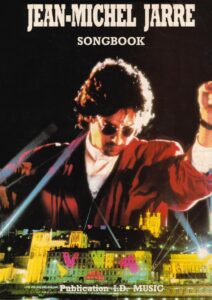 |
Jean Michel Jarre Songbook (Jean Michel Jarre) |
| Jean Schwartz, Sam M. Lewis and Joe Young – I’m All Bound ‘Round with the Mason Dixon Line |
 |
|
| Jean Schwartz, William Jerome and Ray Goetz – I’m Simply crazy Over You |
 |
|
| Jean-Michel Jarre The Concert in China Arpegiator Arpegiateur.mscz | ||
| Jeanne’s Death – Modigliani OST (Guy Farley) | ||
| Jeff Beck – Wired Guitar Recorded Versions with TABlature |
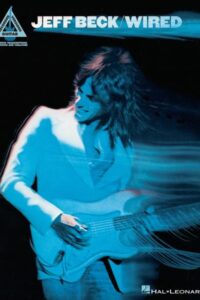 |
Jeff Beck – Wired Guitar Recorded Versions with TABlature |
| Jeff Beck Best of Beck Recorded guitar Versions with TAB |
 |
Jeff Beck Best of Beck Recorded guitar Versions with TAB |
| Jeff Beck Blow by Blow Recorded guitar Versions with TAB |
 |
Jeff Beck Blow by Blow Recorded guitar Versions with TAB |
| Jeff Beck Guitar Signature Licks with Tablature |
 |
Jeff Beck Guitar Signature Licks with Tablature |
| Jeff Beck In Session With Jeff Beck Book + Audio MP3 Embedded Tracks With Tablature |
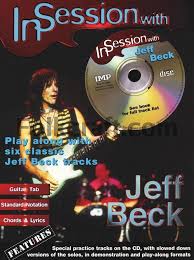 |
Jeff Beck In Session With Jeff Beck Book + Audio MP3 Embedded Tracks With Tablature |
| Jeff Buckley – Hallelujah | ||
| Jeff Buckley Collecition Grace Guitar TABlature |
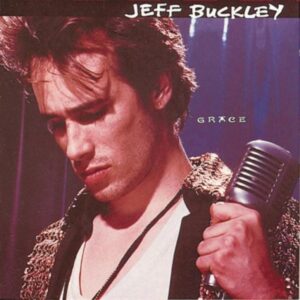 |
Jeff Buckley Collecition Grace Guitar TABlature |
| Jeff Coffin 10 Improvisational Alto Sax Etudes |
 |
|
| Jeff Coffin 10 Improvisational Clarinet Etudes |
 |
|
| Jeff Coffin 10 Improvisational Tenor Sax Etudes |
 |
|
| Jeff Coffin The Saxophone Book Book 1 |
 |
|
| Jeff Coffin The Saxophone Book Book 2 |
 |
|
| Jeff Coffin The Saxophone Book Book 3 |
 |
|
| Jeff Gardner – Blues Book (Piano) |
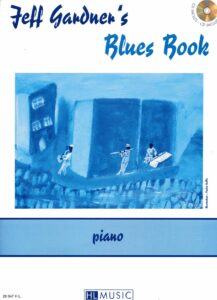 |
|
| Jeff Gardner 12 Easy Jazz Preludes For Piano with MP3 audio tracks to play along |
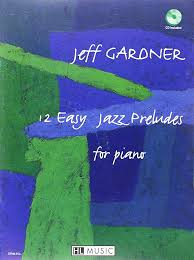 |
Jeff Gardner 12 Easy Jazz Preludes For Piano |
| Jeff Gardner Jazz Preludes Vol. 1 Nos. 1-12 |
 |
|
| Jeff Loomis Plains Of Oblivion Requiem For The Living Guitar Tabs |
 |
|
| Jeff Wayne War Of The Worlds Music, The Musical version (Vintage sheet music 1978) |
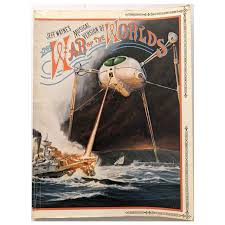 |
Jeff Wayne War Of The Worlds Music, The Musical version (Vintage sheet music 1978) |
| Jeffrey Osborne – On The Wings Of Love | ||
| Jelly Roll Morton Blues and Stomps (Book 1) Vintage sheet music |
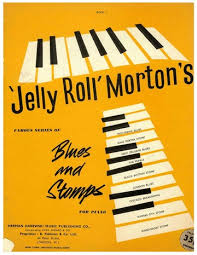 |
Jelly Roll Morton Blues and Stomps |
| Jelly Roll Morton Blues, Stomps and Ragtime (Piano) |
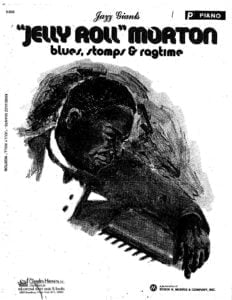 |
jelly roll morton sheet music |
| Jelly Roll Morton Jelly Roll Blues Original Jelly Roll Vintage sheet music |
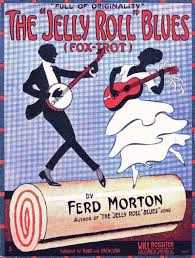 |
|
| Jelly Roll Morton Piano Roll Transcription |
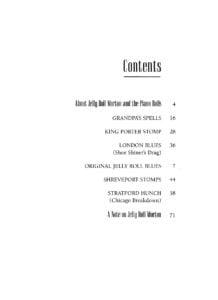 |
jelly roll morton sheet music book |
| Jelly Roll Morton The Best Of Jelly Roll Morton Piano Solo |
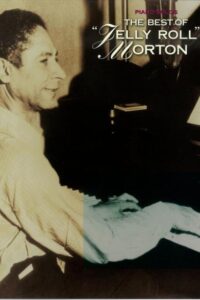 |
Jelly Roll Morton The Best Of Jelly Roll Morton Piano Solo |
| Jelly Roll Morton The Collected Piano Music |
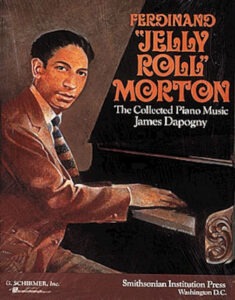 |
Jelly Roll Morton The Collected Piano Music |
| Jenifer Cook Oh How I Love Jesus Piano American Melody |
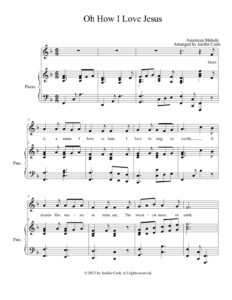 |
|
| Jennifer Linn Footprints in the Snow HLSPL Showcase Solos NFMC 2014-2016 Selection Late Elementary – Level 3 PDF |
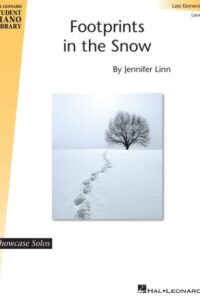 |
|
| Jennifer Linn Journey Through The Classics Book 1 Elementary Piano Repertoire |
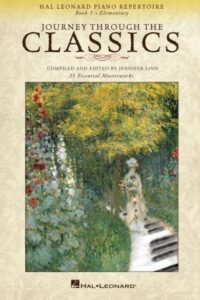 |
Journey Through The Classics Book 1 Elementary |
| Jennifer Linn Journey Through The Classics Book 2 Late Elementary Piano Repertoire |
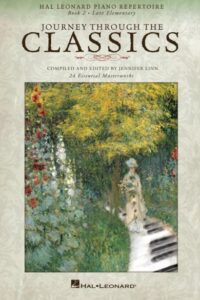 |
Journey Through The Classics Book 2 Late Elementary |
| Jennifer Linn Journey Through The Classics Book 3 Early Intermediate Piano Repertoire |
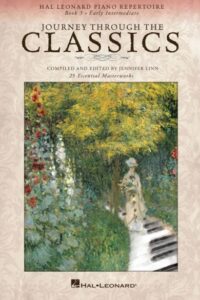 |
Journey Through The Classics Book 3 Early Intermediate |
| Jennifer Linn Journey Through The Classics Book 4 Intermediate Piano Repertoire |
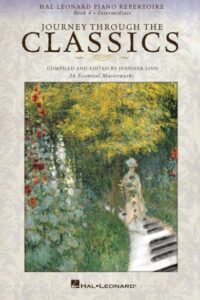 |
Journey Through The Classics Book 4 Intermediate |
| Jennifer Linn Les Petites Impressions Intermediate Level Composer Showcase Pdf |
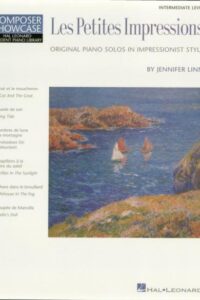 |
Jennifer Linn Les Petites Impressions Intermediate Level Composer Showcase Pdf |
| Jennifer Lopez – Alive | ||
| Jeremy Cullen – Waltz on a Theme by Alban Berg | Jeremy Cullen – Waltz on a Theme by Alban Berg | |
| Jeremy Monteiro Late-Night Thoughts of a Jazz Musician (Jeremy Monteiro) Book |
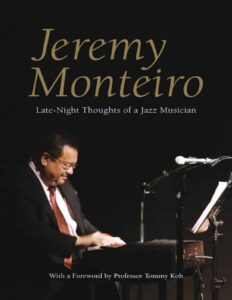 |
|
| Jeremy Siskind Bye Bye Blackbird by Ray Henderson |
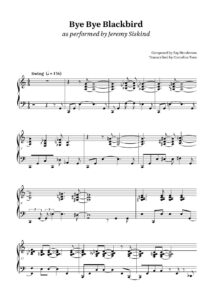 |
|
| Jeremy Siskind Jazz Piano Fundamentals (Books 1-3) Complete Jazz Piano Curriculum Explanations, Exercises, Listening Guides, and Practice Plans |
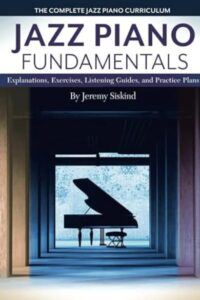 |
|
| Jeremy Sisking Playing Solo Jazz Piano A New Approach For Creative Pianists 2nd Edition |
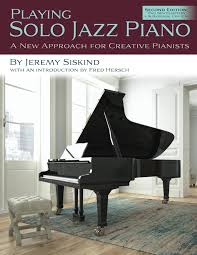 |
|
| Jerome Kern & Oscar Hammerstein All The Things You Are | Jerome Kern & Oscar Hammerstein All The Things You Are | |
| Jerome Kern and Anne Caldwell Whose Baby are You – (Piano Vocal sheet music) |
 |
|
| Jerome Kern Collection 2nd Edition Piano Vocal Guitar Chords |
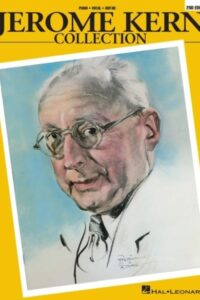 |
Jerome Kern Collection 2nd Edition Piano Vocal Guitar Chords |
| Jerome Kern The Way You Look Tonight | Jerome Kern The Way You Look Tonight | |
| Jerry Bergonzi Jerry Bergonzi Solos Setting Standards (by Miles Osland) |
 |
|
| Jerry Bergonzi – Just Friends (Re-Harmonized) Lead Sheet.mscz | ||
| Jerry Bergonzi – Re-Harmonization of Jazz Standards |
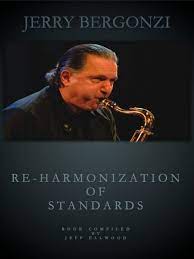 |
Jerry Bergonzi – Re-Harmonization of Jazz Standards |
| Jerry Bergonzi – Improvisation Series (complete) with audio MP3 Vol. 1 to 5 (with MP3 audio tracks) |
 |
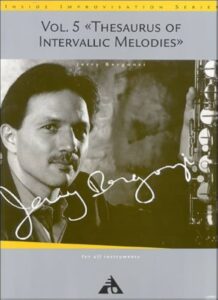 |
| Jerry Bergonzi – Inside Improvisation Vol.6 Developing A Jazz Language with MP3 audio tracks |
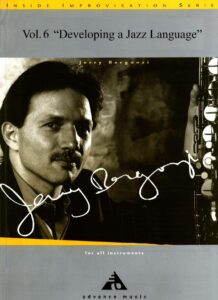 |
Jerry Bergonzi – Inside Improvisation Vol.6 Developing A Jazz Language |
| Jerry Bergonzi – Inside Improvisation Vol.7 Series Hexatonics with MP3 audio tracks |
 |
Jerry Bergonzi – Inside Improvisation Vol.7 Series Hexatonics_compressed |
| Jerry Bergonzi – The Music of Jerry Bergonzi all compositions (for C instruments) |
 |
Jerry Bergonzi – The Music of Jerry Bergonzi all compositions (for C instruments) |
| Jerry Bergonzi The Music Of Jerry Bergonzi For Bb Instruments |
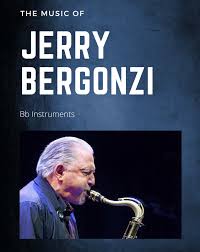 |
Jerry Bergonzi The Music Of Jerry Bergonzi For Bb Instruments |
| Jerry Bergonzy – Scale Motives Or Modal Sequences (Vol. 6) (Musescore File).mscz | ||
| Jerry Bergonzy – Scale Motives Or Modal Sequences (Vol. 6) Part 2 (Musescore File).mscz | ||
| Jerry Cammack – TOM and JERRY RAG |
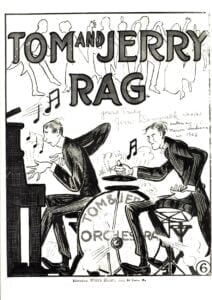 |
|
| Jerry Cocker – Hearing the changes (book) |
 |
|
| Jerry Cocker – Paterns For Jazz |
 |
 Jerry Cocker – Paterns For Jazz Jerry Cocker – Paterns For Jazz |
| Jerry Coker Complete Method for Jazz Improvisation (Play Along Book with audio MP3) |
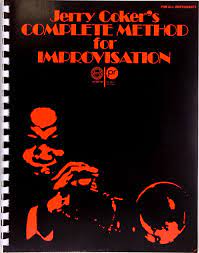 |
Jerry Coker – The Complete Method for Improvisation |
| Jerry Coker Elements of the JAZZ language for the developing improvisor |
 |
|
| Jerry Coker Improvising Jazz |
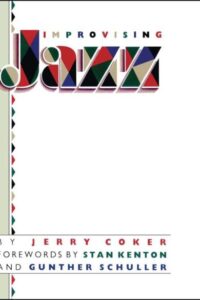 |
|
| Jerry Coker Jazz Patterns – by Jerry Coker Jimmy Casale Gary Campbell Jerry Greene |
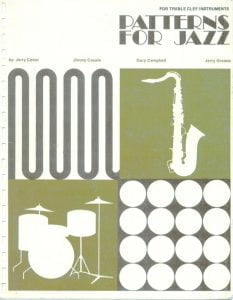 |
Jazz Patterns |
| Jerry Coker’s Jazz Keyboard – For Pianists and Non-Pianists |
 |
Jerry Coker’s Jazz keyboard |
| Jerry Goldsmith The Omen Ave Satani |
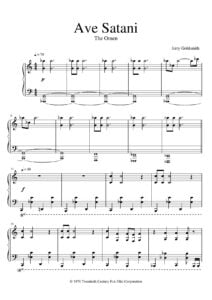 |
|
| Jerry Goldsmith – Alien (piano sheet music) |
 |
|
| Jerry Goldsmith – Papillon (Piano) |
 |
|
| Jerry Goldsmith – Poltergeist (piano) |
 |
|
| Jerry Goldsmith – Star Trek – First Contact (Piano solo) | Jerry Goldsmith – Star Trek – First Contact (Piano solo) | |
| Jerry Goldsmith – The Pipers Dreams (The Omen) sheet music pdf | GOLDSMITH THE PIPER DREAMS THE OMEN SHEET MUSIC PDF | |
| Jerry Goldsmith Basic Instinct – Main Theme |
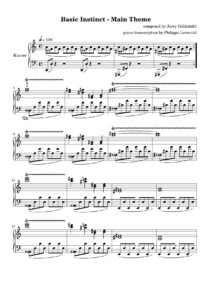 |
|
| Jerry Goldsmith Chinatown Love Theme (Jake And Evelyn) |
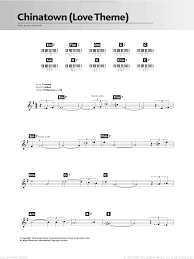 |
|
| Jerry Goldsmith Chinatown Love Theme (Guitar chords) |
 |
|
| Jerry Goldsmith First Blood It’s a long road piano solo |
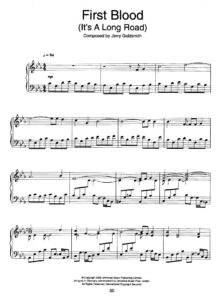 |
|
| Jerry Goldsmith Star Trek The Motion Picture Main Theme (1979) | Jerry Goldsmith 1979 Star Trek The Motion Picture 01 Theme | |
| Jerry Goldsmith Star Trek The Motion Picture The Enterprise arr. for duet two pianos | Jerry Goldsmith Star Trek The Motion Picture The Enterprise arr. for two pianos | |
| Jerry Goldsmith Star Trek Theme piano solo arrangement |
 |
|
| Jerry Goldsmith The Mummy Imhotep | Jerry Goldsmith The Mummy Imhotep | |
| Jerry Goldsmith The Omen – The Piper Dreams – Jerry Goldsmith Sheet Music Pdf |
 |
|
| Jerry Goldsmith The Russia House Katya Jerry Goldsmith piano solo |
 |
|
| Jerry Herman La Cage Aux Folles (Musical) Vocal Piano Score The Broadway Musical |
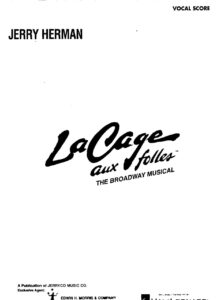 |
Jerry Herman La Cage Aux Folles (Musical) Vocal Piano Score The Broadway Musical |
| Jerry Lee Lewis – Great Balls Of Fire Sheet Music |
 |
 |
| Jerry Lee Lewis Great Balls Of Fire Vocal Piano |
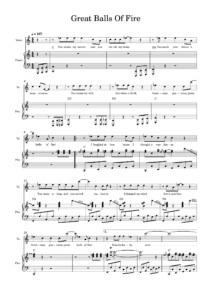 |
|
| Jerry Lee Lewis Roll Over Jerry! | Jerry Lee Lewis Roll Over Jerry! | |
| Jerry Reed Jerrys Breakdown Guitar Tablature | Jerry Reed Jerry’s Breakdown Guitar Tablature | |
| Jerry Reed Heavy Neckin Transcribed By John Knowles Guitar TAB |
 |
Jerry Reed Heavy Neckin Transcribed By John Knowles Guitar TAB |
| Jerry Reed The Claw Guitar Tablature |
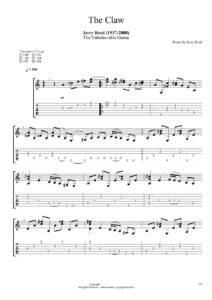 |
|
| Jerry Snyder Guitar Ragtime |
 |
Jerry Snyder Guitar Ragtime |
| Jersey Boys The Musical |
 |
|
| Jesper Kyd – Ezio’s Family (Assassins Creed) |
 |
|
| Jesper Kyd – Ezio’s Family (Musescore File).mscz | ||
| Jesu Joy Of Man’s Desiring (Musescore File).mscz | ||
| Jesus Christ Superstar The Making Of A Modern Gospel by Robert M. Price (Book) |
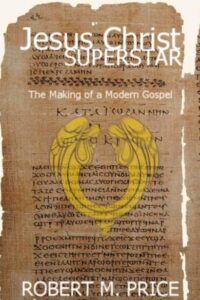 |
|
| Jet Get Born Guitar Songbook with Tablature |
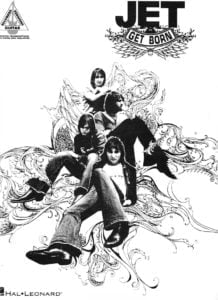 |
Jet Get Born Guitar Songbook |
| Jethro Tull by Raymond Benson Book |
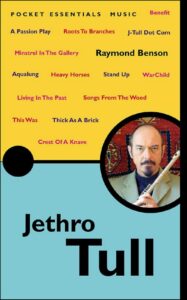 |
|
| Jethro Tull Aqualung (Essay Book) by Allan Moore |
 |
|
| Jethro Tull Flute Solos as performded by Ian Anderson Transcribed by Jeff Rona |
 |
Jethro Tull Flute Solos as performded by Ian Anderson Transcribed by Jeff Rona |
| Jethro Tull Guitar Anthology |
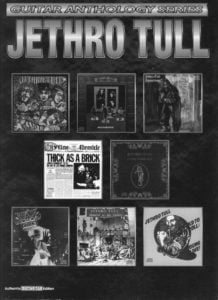 |
Jethro Tull Guitar Anthology |
| Jethro Tull Rock Score |
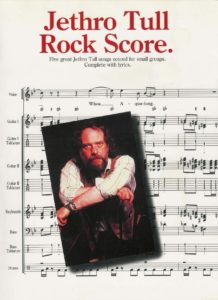 |
|
| Jethro Tull The Best Of Jethro Tull (Piano, guitar & vocal) |
 |
Jethro Tull The Best Of Jethro Tull (Piano, Guitar & Vocal) |
| Jethro Tull Very Best Of Piano Vocal Guitar |
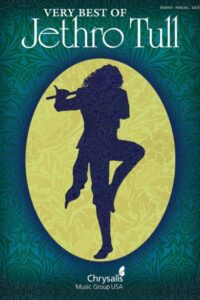 |
Jethro Tull Very Best Of Piano Vocal Guitar |
| Jewel – Foolish Games | ||
| Jewel – Hands | ||
| Jewel – How Do I Live | ||
| Jewish Fake Book, The |
 |
Jewish Fake Book, The |
| Jiggs Whigham Jazz Solos |
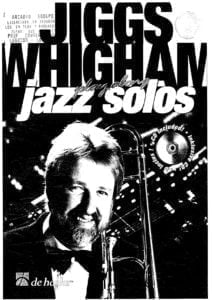 |
|
| Jim Brickman – All I Ever Wanted | Jim-Brickman-All-I-ever-Wanted 1st page | |
| Jim Brickman – Angel Eyes | Jim-Brickman-Angel-Eyes 1st page | |
| Jim Brickman – Destiny |
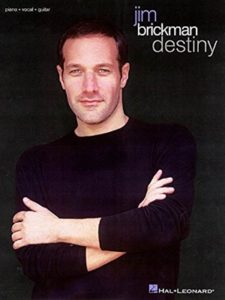 |
Jim Brickman Destiny |
| Jim Brickman – Love Songs & Lullabies (Songbook) |
 |
Jim Brickman – Love Songs & Lullabies (Songbook) contents  |
| Jim Brickman – My Romance Piano Vocal Guitar Songbook, An Evening With Jim Brickman |
 |
Jim Brickman – My Romance Piano Vocal Guitar Songbook, An Evening With Jim Brickman |
| Jim Brickman – Nothing Left To Say | JIM BRICKMAN – Nothing left to say | |
| Jim Brickman – The Collection – Words & Music |
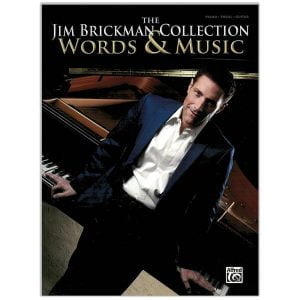 |
Jim Brickman – Collection |
| Jim Brickman – The Disney Songbook |
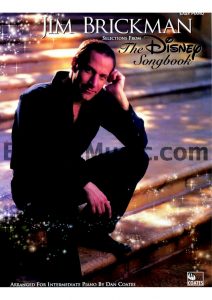 |
Jim Brickman -Disney songbook — Jim Brickman – The Disney Songbook contents |
| Jim Brickman – Valentine | ||
| Jim Brickman By Heart |
 |
Jim Brickman By Heart |
| Jim Brickman Christmas Themes |
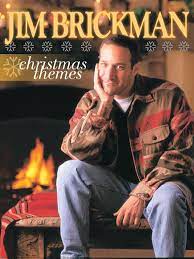 |
Jim Brickman Christmas Themes |
| Jim Brickman Circles |
 |
|
| Jim Brickman Escape Songbook Piano Vocal Guitar |
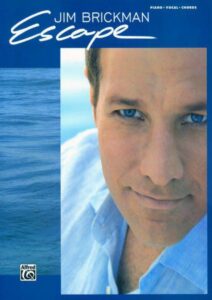 |
Jim Brickman Escape Songbook Piano Vocal Guitar |
| Jim Brickman Greatest Hits |
 |
Jim Brickman Greatest Hits songbook contents |
| Jim Brickman Old Times |
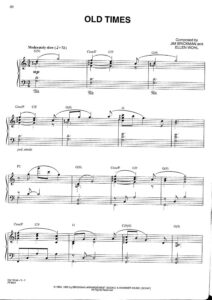 |
|
| Jim Brickman One And Only |
 |
|
| Jim Brickman Piano Anthology |
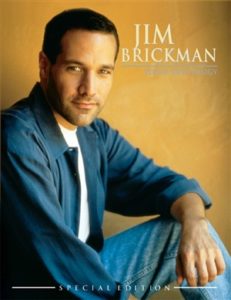 |
Jim Brickman Piano Anthology |
| Jim Brickman Picture This Piano solo collection |
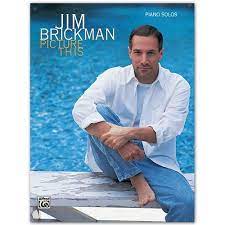 |
Jim Brickman Picture This Piano solo collection |
| Jim Brickman The Gift Piano Solos |
 |
Jim Brickman The Gift Piano Solos sheet music contents |
| Jim Brickman The Promise | Jim Brickman The Promise | |
| Jim Brickman Winter Peace | Jim Brickman-Winter Peace | |
| Jim Croce The Very Best of – Guitar Recorded Versions Tablature |
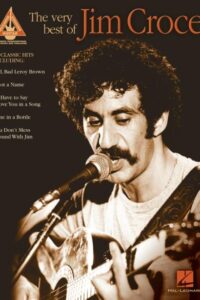 |
Jim Croce The Very Best of – Guitar Recorded Versions Tablature |
| Jim Ferguson All Blues Comping Styles,chords & Grooves For Jazz Guitar (Book +audio Mp3 with Tablature) |
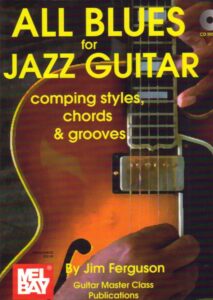 |
All Blues For Jazz Guitar Comping Styles Chords And Grooves by Jim Ferguson Guitar Tablature |
| Jim Hall – Solo on I Hear A Rhapsody from Undercurrent with Bill Evans |
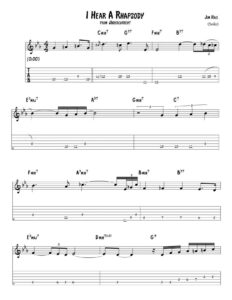 |
|
| Jim Hall – Solo on My Funny Valentine from Undercurrent with Bill Evans |
 |
|
| Jim Hall – Stella by starlight transcription | Jim Hall – Stella by starlight transcription | |
| Jim Hall Exploring Jazz Guitar |
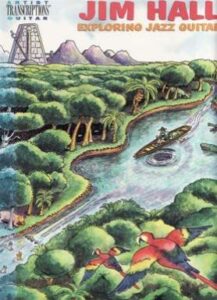 |
Jim Hall Exploring Jazz Guitar |
| Jim Hall Guitar Signature Licks By Adam Perlmutter |
 |
Jim Hall Signature Licks By Adam Perlmutter |
| Jim Hall Music – Principles of Guitar Improvisation Jazz Guitar Master Class |
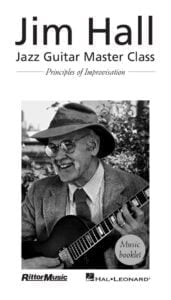 |
Jim Hall Music – Principles of Guitar Improvisation Jazz Guitar Master Class contents —- Jim hall |
| Jim Hall The Best – of Guitar Recorded Versions Tablature |
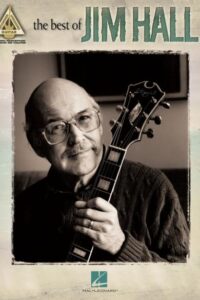 |
Jim Hall The Best – of Guitar Recorded Versions Tablature |
| Jim Mc Neely – Piano Comping Workbook Text: English / français / deutsch |
 |
Jim Mc Neely – Piano Comping Workbook |
| Jim Morrison The Lizard King The Essential Jim Morrison (Book Biography) |
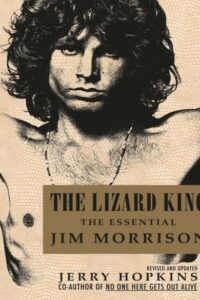 |

